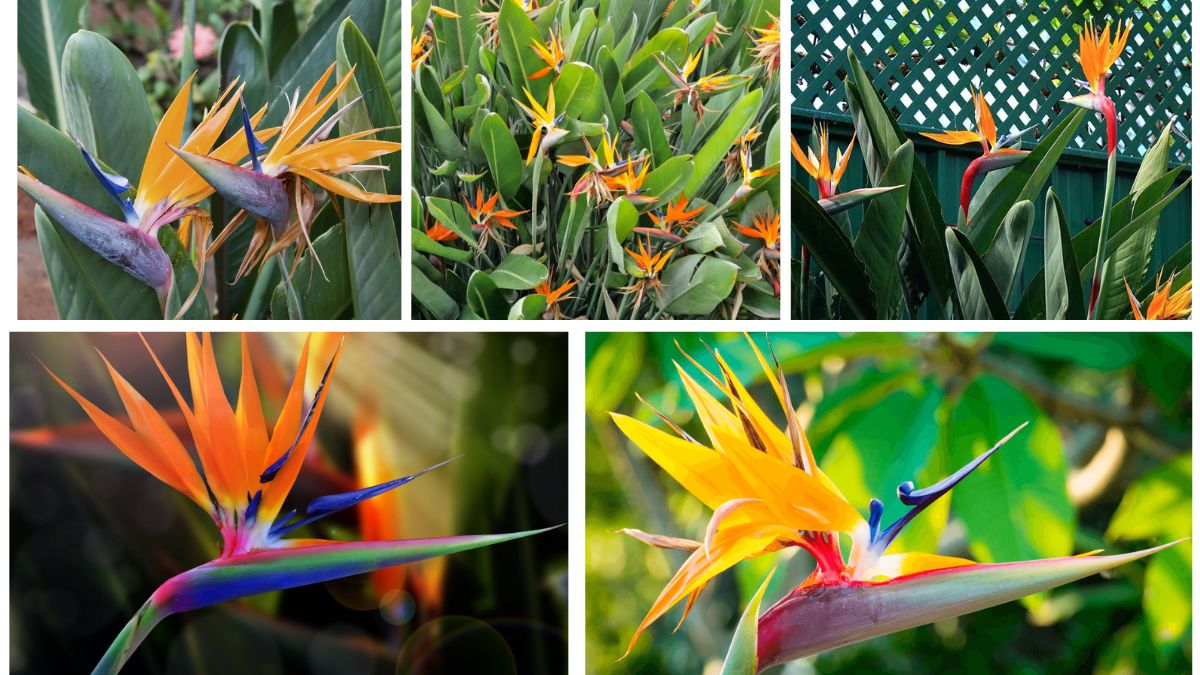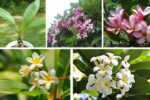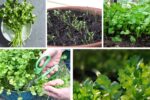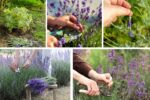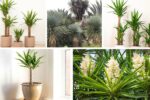Few plants capture the essence of the tropics as vividly as the Bird of Paradise (Strelitzia). With its dramatic foliage and bird-like flowers that resemble tropical birds in flight, this plant instantly transforms any garden or indoor space into a lush paradise. Native to South Africa, the Bird of Paradise has become a favorite in tropical and subtropical landscapes around the world. Whether you’re aiming to create a bold focal point outdoors or a statement plant indoors, Bird of Paradise species offer unmatched beauty and elegance.
In this guide, we’ll explore five stunning Bird of Paradise plants you can grow for tropical beauty, along with their unique features, care requirements, and tips to help them thrive.
1. Strelitzia reginae (Orange Bird of Paradise)
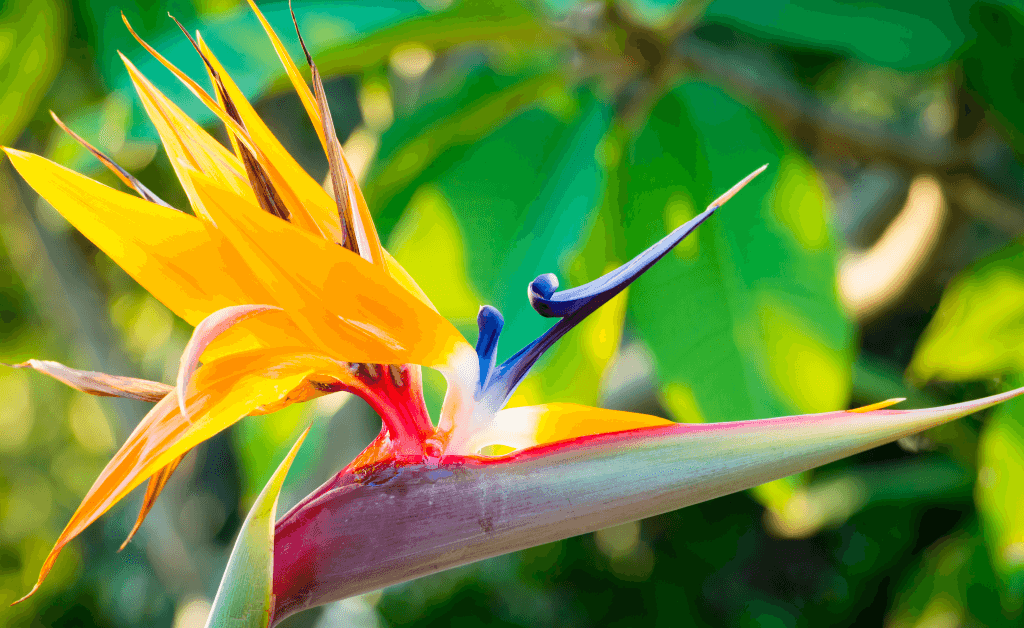
The most iconic and widely recognized, Strelitzia reginae is the plant most people think of when they hear “Bird of Paradise.” Its vibrant orange and blue flowers resemble a bird in mid-flight, making it a breathtaking focal point in any garden.
Key Features
- Flower Color: Bright orange petals with blue tongues.
- Height: Grows up to 4–6 feet tall.
- Foliage: Banana-like evergreen leaves that provide a lush, tropical backdrop.
- Bloom Season: Late winter to early spring (can bloom year-round in tropical climates).
Growing Tips
- Prefers full sun to partial shade for best flowering.
- Thrives in well-draining soil rich in organic matter.
- Requires regular watering but allow the top layer of soil to dry slightly between sessions.
- In cooler regions, it can be grown in large containers and overwintered indoors.
Why Choose It?
This is the classic Bird of Paradise that combines both bold foliage and showy flowers. It’s perfect for gardens, patios, or even as a stunning indoor plant if given plenty of light.
2. Strelitzia nicolai (Giant White Bird of Paradise)
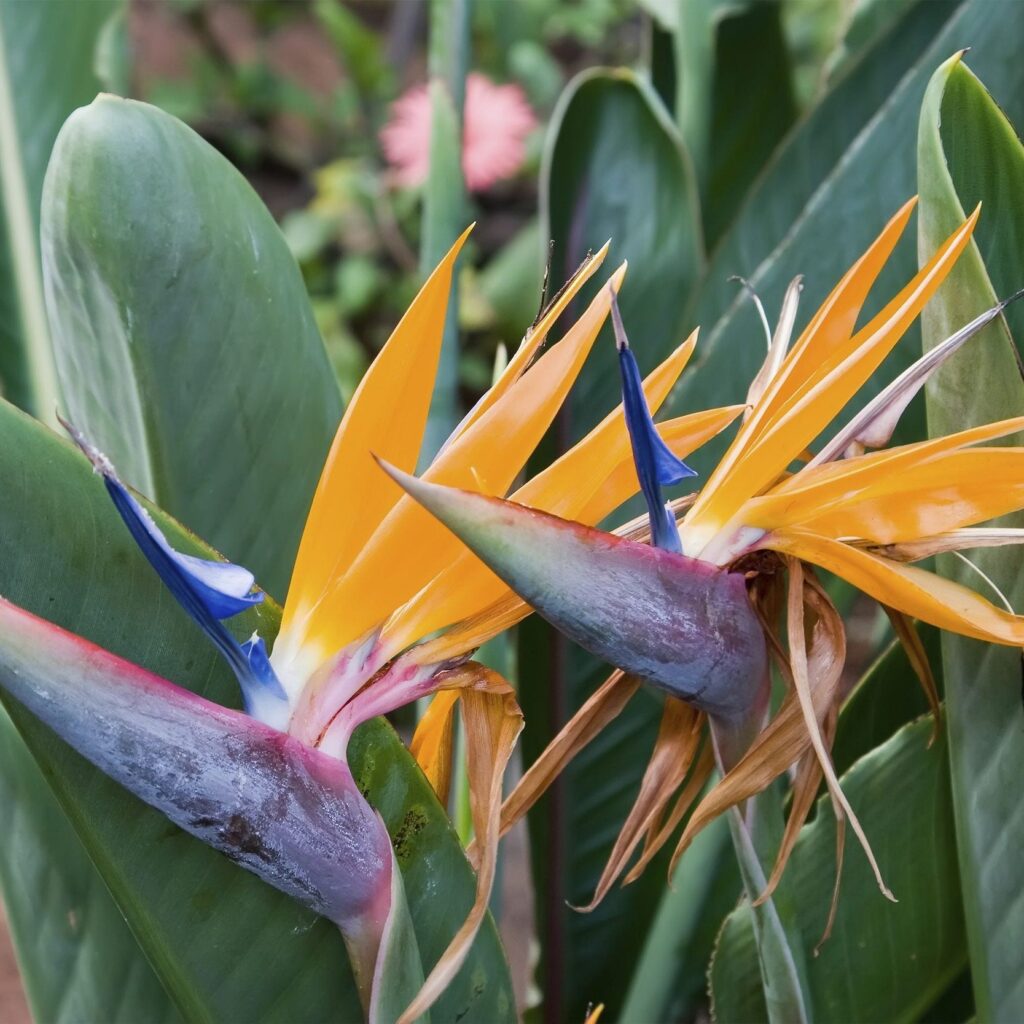
For those who dream of adding a bold architectural statement to their garden, the Giant White Bird of Paradise delivers. Unlike S. reginae, this species grows much taller and produces striking white and blue flowers.
Key Features
- Flower Color: White with a hint of blue.
- Height: Can reach 20–30 feet outdoors in tropical climates.
- Foliage: Large, paddle-shaped leaves similar to banana plants.
- Bloom Season: Spring to summer (occasionally year-round in warm climates).
Growing Tips
- Requires full sun outdoors, but tolerates bright indirect light indoors.
- Needs ample space to spread, making it ideal for large gardens.
- Regular watering is necessary, though it tolerates short periods of drought once established.
- Protect from strong winds, as large leaves can tear.
Why Choose It?
This variety creates a tropical jungle vibe with its towering foliage and exotic flowers. It’s especially striking as a specimen plant in big gardens or as an indoor “tree” in high-ceilinged spaces.
3. Strelitzia juncea (Narrow-leaved Bird of Paradise)
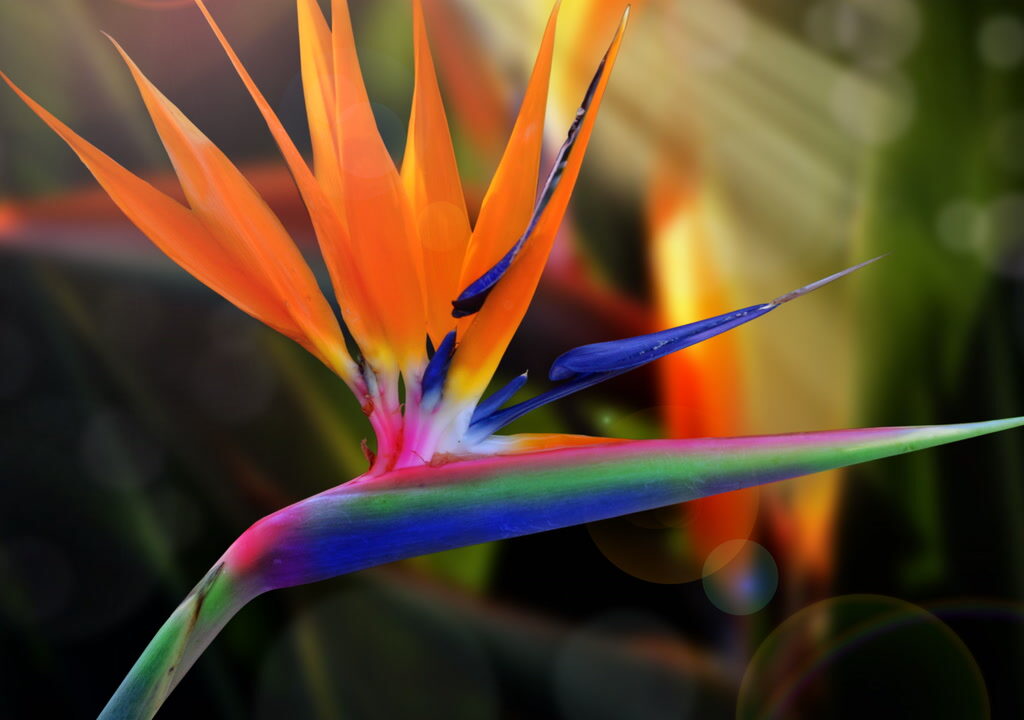
A unique twist on the classic Bird of Paradise, Strelitzia juncea stands out with its narrow, reed-like leaves. Despite the different foliage, it produces the same striking orange and blue flowers as S. reginae.
Key Features
- Flower Color: Orange and blue.
- Height: Typically 4–6 feet tall.
- Foliage: Cylindrical, reed-like leaves (great for drought-prone gardens).
- Bloom Season: Throughout the year in suitable climates.
Growing Tips
- Prefers full sun but tolerates light shade.
- Highly drought-tolerant, making it ideal for xeriscaping or water-wise gardens.
- Needs sandy, well-draining soil.
- Low-maintenance once established.
Why Choose It?
This variety is perfect if you love the tropical look but live in a dry, arid climate. It combines the drama of the Bird of Paradise flower with foliage that thrives in desert-like conditions.
4. Strelitzia alba (White Bird of Paradise)
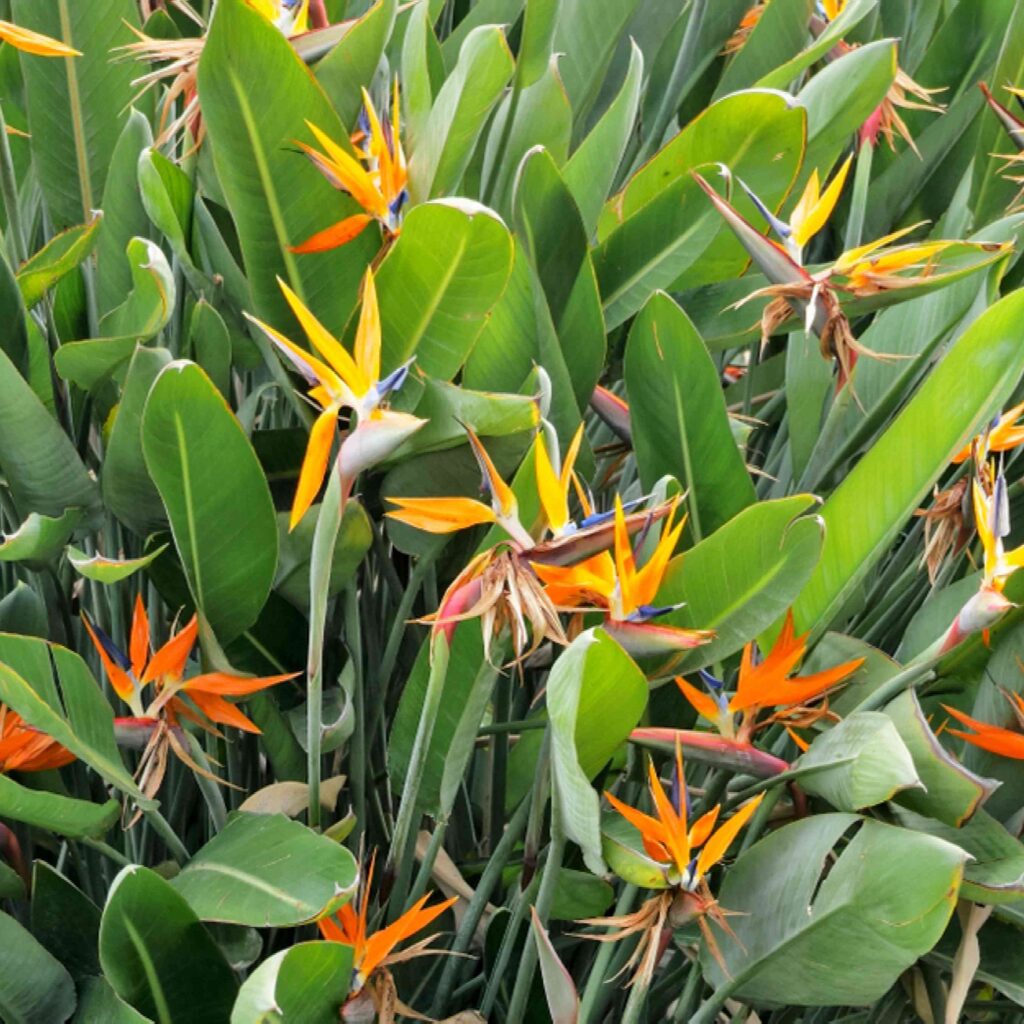
Also called the Cape Wild Banana, this species resembles S. nicolai but has slightly smaller flowers and a more elegant growth habit. Its white and dark-blue flowers add a sophisticated tropical touch to gardens.
Key Features
- Flower Color: White and blue.
- Height: Can grow up to 20 feet tall.
- Foliage: Large banana-like leaves with lush green tones.
- Bloom Season: Mainly spring to summer.
Growing Tips
- Thrives in full sun outdoors, but can adapt to bright, filtered light indoors.
- Requires regular watering, especially in warm weather.
- Protect from frost, as it’s sensitive to cold.
- Needs rich, organic soil for strong growth.
Why Choose It?
The White Bird of Paradise is ideal if you prefer subtler flower colors compared to the vibrant orange of S. reginae. Its towering form and soft hues make it an elegant choice for tropical-themed gardens.
5. Strelitzia caudata (Mountain Strelitzia)
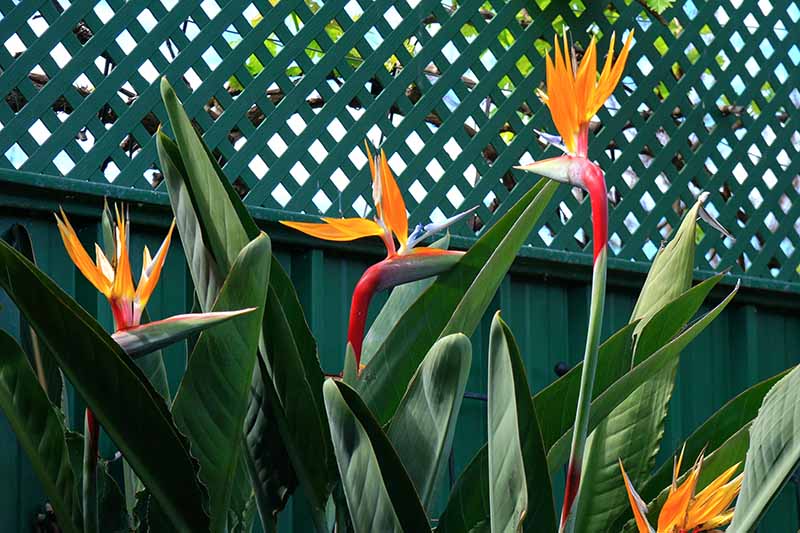
One of the rarer species, Strelitzia caudata, also known as the Mountain Strelitzia, grows naturally in higher altitudes of South Africa. It’s a large, tree-like species with white and blue flowers, making it both exotic and hardy.
Key Features
- Flower Color: White and blue.
- Height: Up to 20 feet in its native habitat.
- Foliage: Large, lush leaves similar to other species but more robust.
- Bloom Season: Spring through summer.
Growing Tips
- Prefers full sun and plenty of space.
- Needs rich, well-draining soil to thrive.
- Regular watering is essential, but it tolerates short dry spells.
- Best suited for tropical and subtropical gardens.
Why Choose It?
If you’re looking for something rare and unique, this variety adds a touch of exclusivity to your collection. Its hardy nature and striking blooms make it a conversation starter.
General Care Tips for All Bird of Paradise Varieties
Regardless of the species, there are some common care guidelines to keep your Bird of Paradise plants thriving:
- Soil: Well-draining, nutrient-rich soil is essential. A mix of garden soil, sand, and compost works well.
- Watering: Keep soil moist but not soggy. Water deeply and allow slight drying between waterings.
- Light: Full sun promotes the best flowering, though some species adapt to partial shade.
- Feeding: Apply a balanced fertilizer every 4–6 weeks during the growing season.
- Pruning: Remove old leaves and spent flowers to encourage new growth.
- Container Growing: Smaller species like S. reginae and S. juncea grow well in containers, provided they have room for root development.
- Frost Protection: These plants are sensitive to frost—bring potted ones indoors during winter in cold climates.
Conclusion
Bird of Paradise plants are among the most striking tropical ornamentals you can grow. From the classic orange blooms of Strelitzia reginae to the towering grandeur of S. nicolai and the rare beauty of S. caudata, each variety offers something unique. Whether you want a vibrant focal point, a bold architectural plant, or a drought-tolerant option, there’s a Bird of Paradise species that fits your garden design.
By choosing one or more of these five stunning Bird of Paradise plants, you can bring an unmistakable tropical charm to your home or outdoor space. With proper care, they will reward you with dramatic foliage and exotic blooms that never fail to impress.
